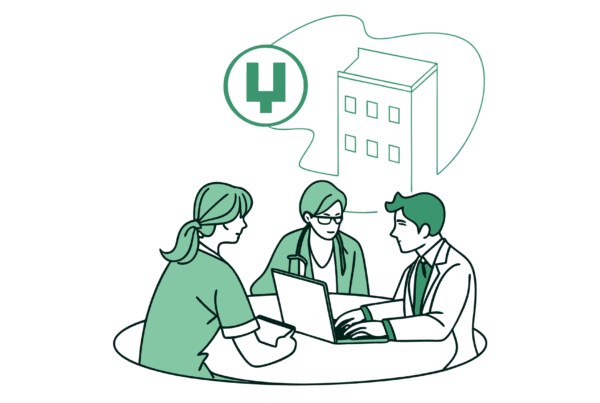As the owner of a palliative care practice in San Diego, you are in a unique position. The field is experiencing growing demand as payment models evolve and healthcare systems recognize its value in improving patient outcomes and reducing costs. However, selling a palliative care practice comes with unique challenges that require informed navigation. This guide provides a brief overview of the San Diego market, what buyers look for, and how to prepare for a successful transition.
Market Overview
The market for palliative care is at an inflection point. Once viewed as a cost center, its ability to produce cost savings and improve quality of life is now widely recognized by payers. This shift is fueling M&A interest nationwide, and San Diego is no exception.
A Market in Transition
The perception of palliative care is changing. With studies from the NIH showing clear cost savings and improved patient outcomes, buyers are increasingly interested in practices that have a proven model. This trend suggests that valuations for well-run palliative care practices are on an upward trajectory as the market matures and moves past the “loss leader” mindset.
The San Diego Landscape
San Diego’s healthcare market includes major systems like UC San Diego Health and Scripps Health, which have integrated palliative care services. While this means competition, it also confirms the local demand. Independent practices that can demonstrate operational efficiency, strong community ties, and a consistent patient base are attractive acquisition targets for larger platforms looking to expand their footprint in Southern California, where services can command rates around $24 per hour.
Key Considerations
When preparing your practice for sale, you need to think like a buyer. Beyond the financials, buyers are purchasing a system. They will want to see a stable patient census supported by a diverse and reliable network of referral sources. It’s also important to clearly define your services, distinguishing palliative care from hospice to avoid confusion. A strong, credentialed team of nurses, social workers, and physicians is another key asset. Preparing a clear story around these elements is just as important as having clean financial statements. A buyer must understand how your practice operates and why it is positioned for future growth.
Market Activity
Activity in the San Diego home health and hospice space indicates a healthy appetite for acquisitions. While direct palliative care transactions are less publicized, the principles remain the same. Buyers are looking for established, well-run operations.
Here are three things we see buyers focusing on in the San Diego market:
- Stable Operations. Buyers want to see a consistent patient census and growth over time. This metric is a direct indicator of market acceptance and operational stability.
- Verifiable Compliance. A clean record with all state licensing and regulatory bodies is non-negotiable. Proving this early in a conversation builds immediate trust and streamlines due diligence.
- Strong Referral Networks. An established and documented network of referrers is a core asset. It shows the practice isn’t overly reliant on a single source and has a sustainable path for patient intake.
Sale Process
Selling a practice is a structured process, not a single event. It begins long before you speak to a buyer. The first step is preparation, where you organize your financials and operational data. Next comes a formal valuation to understand what your practice is worth. Only then does an advisor confidentially market your practice to a curated list of qualified buyers. After initial offers are received, the most critical stage begins: due diligence. This is an intense review where buyers verify every aspect of your practice. Many deals fail here due to poor preparation. Successfully clearing this stage leads to final negotiations and closing the transaction.
Valuation
Your practices value isnt just its annual revenue. Sophisticated buyers determine value based on Adjusted EBITDA (Earnings Before Interest, Taxes, Depreciation, and Amortization). This figure represents your true cash flow after normalizing for any owner-specific or one-time expenses. A valuation multiple is then applied to this number. The multiple isn’t fixed; it changes based on risk and growth potential. Most practices are undervalued until their earnings are properly adjusted and their growth story is framed for buyers.
| Factor | Impact on Valuation Multiple | Why It Matters to a Buyer |
|---|---|---|
| Provider Reliance | Higher for multi-provider models | Reduces risk of owner’s departure |
| Payer Mix | Higher for diverse, stable contracts | Indicates predictable revenue stream |
| Growth Profile | Higher for clear expansion potential | Buyer is paying for future earnings |
| Operational Systems | Higher for documented processes | Practice is easier to integrate |
Post-Sale Considerations
The transaction itself is not the end of the journey. Your role after the sale, the future of your dedicated staff, and your financial legacy all depend on how the deal is structured. Will you continue to work for a defined period? Will you retain some equity in the new, larger company through a rollover? These are not afterthoughts. They are key negotiation points that protect your interests and determine your final outcome. The structure has major implications for your after-tax proceeds, and the right plan ensures the legacy you built is protected long after you transition to your next chapter.
Frequently Asked Questions
What is driving the growing demand for palliative care practices in San Diego, CA?
The growing demand for palliative care practices in San Diego is driven by evolving payment models and healthcare systems recognizing the value of palliative care in improving patient outcomes and reducing overall healthcare costs.
What are some unique challenges when selling a palliative care practice in San Diego?
Unique challenges include demonstrating operational efficiency, maintaining a stable patient census, differentiating palliative care from hospice services, and preparing a reputable team and clear practices that appeal to buyers.
What do buyers typically look for when acquiring a palliative care practice in San Diego?
Buyers look for stable operations with consistent patient growth, verifiable compliance with licensing and regulations, and strong, diverse referral networks that ensure sustainable patient intake.
How is the valuation of a palliative care practice in San Diego determined?
Valuation is based on Adjusted EBITDA, reflecting true cash flow after normalizing expenses. A valuation multiple is then applied that varies based on factors like provider reliance, payer mix, growth potential, and operational systems in place.
What considerations are important for the seller after the sale of a palliative care practice in San Diego?
Post-sale considerations include the seller’s role going forward, the future of the practice’s staff, and how the deal structure protects the seller’s financial legacy, possibly including continued work or equity retention to safeguard interests.



